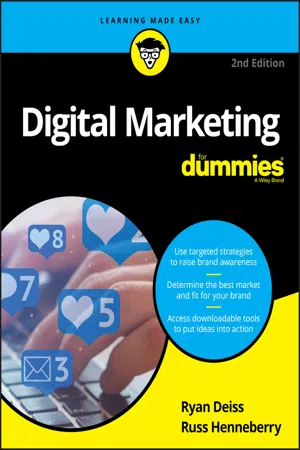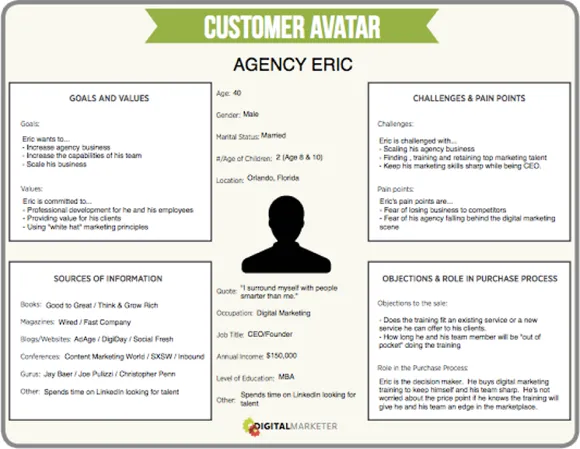
- English
- ePUB (mobile friendly)
- Available on iOS & Android
Digital Marketing For Dummies
About this book
Get digital with your brand today!
Digital Marketing for Dummies has the tools you need to step into the digital world and bring your marketing process up to date. In this book, you'll discover how digital tools can expand your brand's reach and help you acquire new customers. Digital marketing is all about increasing audience engagement, and the proven strategy and tactics in this guide can get your audience up and moving!
You'll learn how to identify the digital markets and media that work best for your business—no wasting your time or money! Discover how much internet traffic is really worth to you and manage your online leads to convert web visitors into paying clients. From anonymous digital prospect to loyal customer—this book will take you through the whole process!
- Learn targeted digital strategies for increasing brand awareness
- Determine the best-fit online markets for your unique brand
- Access downloadable tools to put ideas into action
- Meet your business goals with proven digital tactics
Digital marketing is the wave of the business future, and you can get digital with the updated tips and techniques inside this book!
Frequently asked questions
- Essential is ideal for learners and professionals who enjoy exploring a wide range of subjects. Access the Essential Library with 800,000+ trusted titles and best-sellers across business, personal growth, and the humanities. Includes unlimited reading time and Standard Read Aloud voice.
- Complete: Perfect for advanced learners and researchers needing full, unrestricted access. Unlock 1.4M+ books across hundreds of subjects, including academic and specialized titles. The Complete Plan also includes advanced features like Premium Read Aloud and Research Assistant.
Please note we cannot support devices running on iOS 13 and Android 7 or earlier. Learn more about using the app.
Information
Getting Started with Digital Marketing
Understanding the Customer Journey



Creating a Customer Avatar
- Content marketing: What blog posts, videos, podcasts, and so on should you create to attract and convert your avatar?
- Search marketing: What solutions is your avatar searching for on search engines like Google, YouTube (yes, YouTube is a search engine), and Bing?
- Social media marketing: What social media sites is your avatar spending time on? What topics does your avatar like to discuss?
- Email marketing: Which avatar should receive a specific email marketing campaign?
- Paid traffic: Which ad platforms should you buy traffic from and how will you target your avatar?
- Product creation: What problems is your avatar trying to solve?
- Copywriting: How should you describe offers in your email marketing, ads, and sales letters in a way that compels your avatar to buy?
What to include in your customer avatar
- Goals and values: Determine what the avatar is trying to achieve. What values does he or she hold dear?
- Sources of information: Figure out what books, magazines, blogs, news stations, and other resources the avatar references for information.
- Demographics: Establish the age, gender, marital status, ethnicity, income, employment status, nationality, and political preference of the avatar.
- Challenges and pain points: What is holding the avatar back from achieving his or her goals?
- Objections: Why would the avatar choose not to buy your product or service?
Introducing Agency Eric: A customer avatar example
- The marketing freelancer: Wants to distinguish herself from the other freelancers she is competing with in the marketplace.
- The marketing agency owner: Wants to add to the services he can offer his clients and to sharpen the marketing skills of his employees.
- The employee: Wants to distinguish himself at his place of employment or to secure a new job or promotion within his existing job.
- The business owner: Wants to sharpen her own marketing skills and the skills of her internal marketing team members.

Getting c...
Table of contents
- Cover
- Table of Contents
- Introduction
- Part 1: Getting Started with Digital Marketing
- Part 2: Using Content to Generate Fans, Followers, and Customers
- Part 3: Generating Website Traffic
- Part 4: Measuring, Analyzing, and Optimizing Campaigns
- Part 5: The Part of Tens
- Index
- About the Authors
- Connect with Dummies
- End User License Agreement

